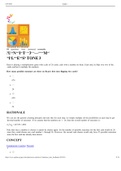College aantekeningen
Lecture notes of endocrinology
- Instelling
- Rijksuniversiteit Groningen (RuG)
Almost all information given during the lectures of food and metabolism in 2021, all in one document. Including pictures from the slides for more clarification
[Meer zien]













